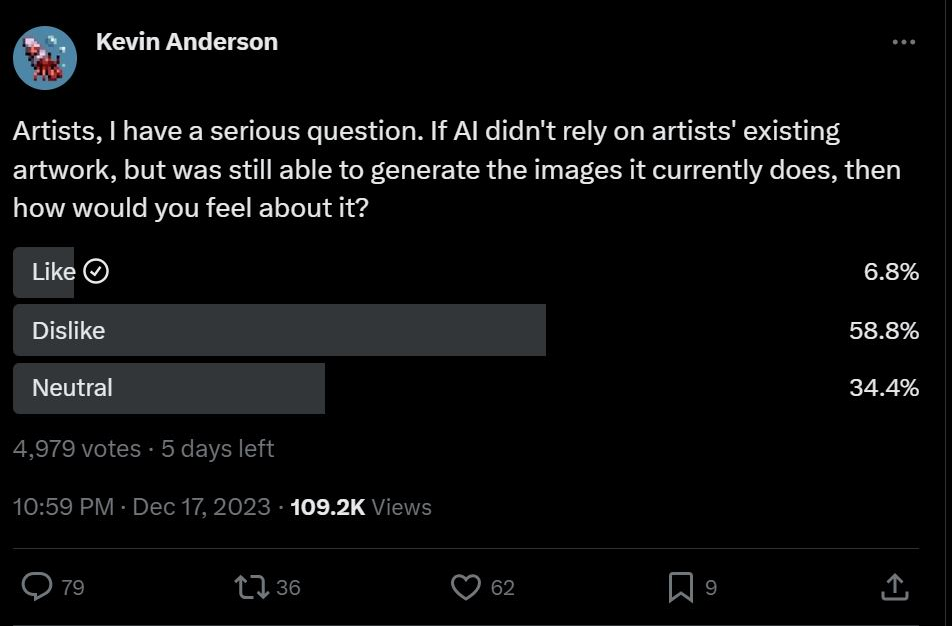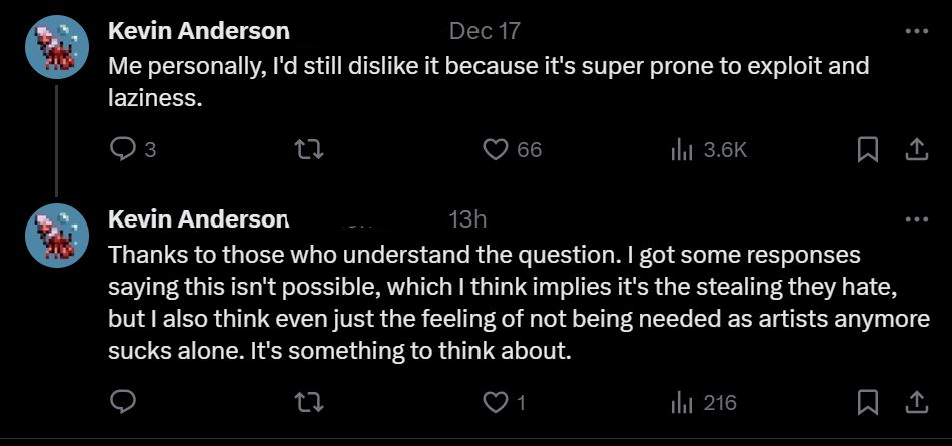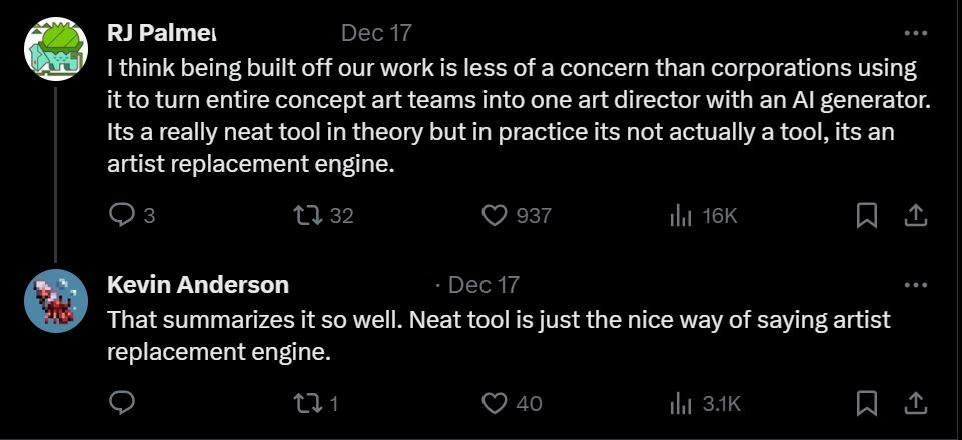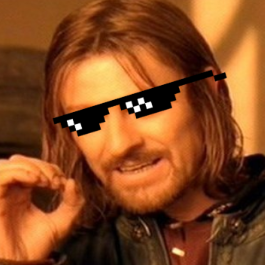

If the models were purely being used for research, I might buy the argument that fair use applies. But the fair use balancing act also incorporates an element of whether the usage is commercial in nature and is intended to compete with the rights holder in a way that affects their livelihood. Taking an artist’s work in order to mass produce pieces that replicates their style, in such a way that it prevents the artist from earning a living, definitely affects their livelihood, so there is a very solid argument that fair use ceased to apply when the generative AI entered commercial use.
Fair Use also protects commercial endeavors. Fair use is a flexible and context-dependent doctrine based on careful analysis of four factors: the purpose and character of the use, the nature of the copyrighted work, the amount and substantiality of the portion used, and the effect of the use upon the potential market. No one factor is more important than the others, and it is possible to have a fair use defense even if you do not meet all the criteria of fair use.
More importantly, I don’t think more works in a style would prevent an artist from making a living. IMO, it could serve as an ad to point people where to get “the genuine article”.
The people that made the AI models aren’t engaging in self-expression at this point. The users of the AI models may be, but they’re not the ones that used all the art without consent or compensation. The companies running the AI models are engaged purely in profit-seeking, making money from other people’s work. That’s not self-expression and it’s not discussion. It’s greed.
Agreed, but don’t forget that there are plenty of regular people training their own models and offering them to everyone for free who don’t have a company apparatus to defend them, and they are targeted and not spared this ire.
The AI models can combine concepts in new ways, but it still can’t create anything truly new. An AI could never have given us something like Cubism, for example, because visually nothing like it had ever existed before, so there would have been nothing in its training data that could have made anything like it.
Cubism is, in part, a combination of the simplified and angular forms of ancient Iberian sculptures, the stylized and abstract features of African tribal masks, and the flat and decorative compositions of Japanese prints. Nothing like it existed before because no one had combined those specific concepts quite yet.
What a human brings to the process is life experience and an emotional component that an AI lacks.
It is still a human making generative art, and they can use their emotions and learned experiences to guide the creation of works. The model is just a tool to be harnessed by people.
All an AI can do is combine existing concepts into new combinations (like combining fried eggs and flowers - both of those objects are existing concepts). It can’t create entirely new things that aren’t represented somewhere in its training data. If it didn’t know what fried eggs and flowers were, it would be unable to create them.
New tools have already made what you’re talking about possible, and they will continue to improve.







Is there a limit to how many jobs a person can take?